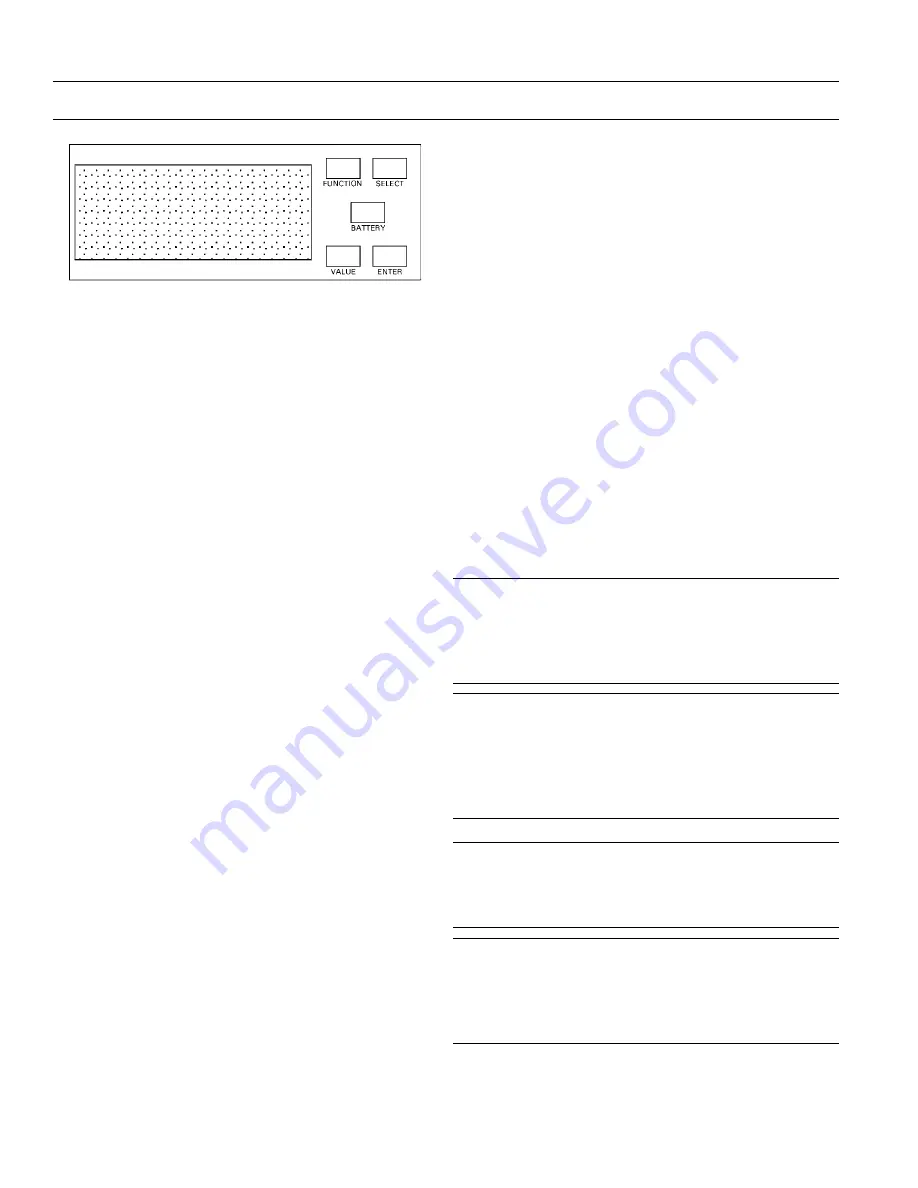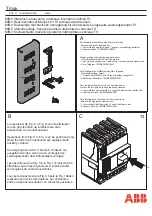
MicroVersaTrip Plus™ and MicroVersaTrip PM™ Trip Units
Chapter 1. Introduction
8
point is entered, it is stored in the Trip Unit’s non-
volatile memory, so subsequent loss of power does
not result in loss or change of any settings.
The functions of the five keys are
•
FUNCTION
-- selects the mode of display.
•
SELECT
-- chooses the next item for display.
•
VALUE
-- selects the phase-to-phase display or
allows changing of set points.
•
ENTER
-- stores set points.
•
B A T T E R Y
-- powers the Trip Unit from the
internal battery.
Chapter 2 describes the operation of these keys in
detail.
Battery Function
Pressing the
BATTERY
key on the face of the Trip
Unit powers the unit from its internal battery. Bat-
tery power is maintained for 30 seconds after the last
key is pressed. This self-powered mode allows setting
up the Trip Unit or viewing trip targets when the
breaker is de-energized and external control power is
unavailable. All normal setup, meter, and status
functions can be performed with battery power.
The battery is intended to power the Trip Unit when
it is otherwise unpowered. At low line currents the
Trip Unit display is not active. Pressing the
BATTERY
key under these conditions will not power the Trip
Unit.
Note that at temperatures above 40° C, the
BATTERY
key may have to be held down for up to 5 seconds for
the Trip Unit to be powered.
Batteries
The Trip Unit uses a lithium sulfuryl chloride bat-
tery with a typical life of two years in a normally
energized breaker. Typical usage could include one
half-hour of use for first-time cold setup, 10 Trip
Unit status checks per year on a de-energized
breaker, and one or two configuration changes per
year.
The battery is
not required for proper operation or
protection of the breaker. It is not needed nor used
to store setpoints, configurations, or trip target
information. It provides a source of power to display
setpoints and trip information only if no other
source of power is available.
Battery Replacement
Replace the battery if it does not power up the Trip
Unit or if the low-battery symbol appears in the
display when the
BATTERY
key is pressed. Lift the
right-side tab of the battery cover on the front of the
Trip Unit to expose the 3.9 V AA lithium cell. A
suitable replacement is the Electrochem 3B24–XA,
which is available from industrial distributors. The
manufacturer’s address is listed in Appendix 4.
W
W
W
WA
A
A
AR
R
R
RN
N
N
NIIIIN
N
N
NG
G
G
G:::: Replace the battery with Electrochem
3B24–XA only. Use of a different battery may present
risk of fire, explosion, or damage to equipment.
Observe proper battery polarity when installing in
the Trip Unit battery compartment.
A
A
A
A T
T
T
T T
T
T
T E
E
E
E N
N
N
N T
T
T
T IIII O
O
O
O N
N
N
N :::: Remplacer la batterie avec
uniquement des Electrochem 3B24–XA. L’utilisation
d’autres batteries peut présenter un risque de feu,
d’explosion ou d’endommagement du matériel.
Respecter la polarité de la batterie en l’installant
dans son logement.
W
W
W
WA
A
A
AR
R
R
RN
N
N
NIIIIN
N
N
NG
G
G
G:::: The battery may explode if mistreated.
Do not recharge, disassemble, or dispose of in fire.
Keep the battery away from children and dispose of
the used battery promptly.
A
A
A
AT
T
T
TT
T
T
TE
E
E
EN
N
N
NT
T
T
TIIIIO
O
O
ON
N
N
N:::: La batterie peut exploser en cas de
mauvaise utilisation. Ne pas la recharger, l’ouvrir ou
la jeter dans un feu. Doit être garder hors de portée
des enfants. Une fois usée, la batterie doit être jeté
rapidement.
Figure 6. Function key placement on face of Trip Unit.















































